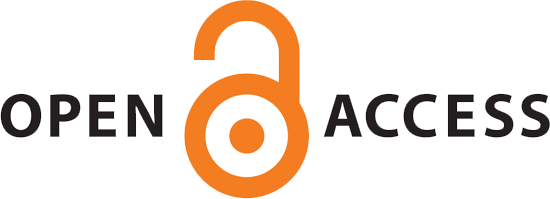Anesthetic Management for Rhinoplasty in a Patient with a History of Bilateral Adrenalectomy Due to Controlled Cushing’s Syndrome: A Case Report
Abstract
Bilateral adrenalectomy, in the event of elective surgery, poses problems for an anesthetic manager due to hemodynamic instability, glucocorticoid replacement dependency, adrenal insufficiency, or a whole series of their associated endocrine disorders, one of which is hypothyroidism. This case report deals primarily with the perioperative considerations and management of the patient with Cushing's syndrome, who was planned for elective rhinoplasty following bilateral adrenalectomy. A 33-year-old woman who underwent bilateral adrenalectomy in childhood due to Cushing's syndrome came for elective rhinoplasty to correct post-traumatic nasal septal deviation. The preoperative workup revealed severe hair loss, dry skin, symptoms of orthostatic hypotension, and a systolic blood pressure reading consistently below 80 mmHg. Laboratory investigations gave evidence of elevated TSH (18.9 mIU/L), suggestive of hypothyroidism. Therefore, she was referred to an endocrinologist, and treatment with levothyroxine and fludrocortisone was initiated. An improvement in thyroid function was established a month later (TSH: 1.9 mIU/L), and hypotension was controlled. Surgery was scheduled after getting approval from the anesthesiology team and a detailed risk discussion with an informed patient consenting to proceed. During surgery, constant monitoring of the patient's vitals was carried out. Everything went on very well, and the patient was discharged, stable. Among challenging patients such as those with adrenal insufficiency, careful preoperative evaluation, hormone imbalance correction, and proper steroid supplementation play a vital role in avoiding adrenal crisis states during or after surgery. Effective teamwork is achieved between anesthesiologists, endocrinologists, and surgeons in endeavoring to make a surgical outcome safe and successful.
[2] Ritzel K, Beuschlein F, Mickisch A, Osswald A, Schneider HJ, Schopohl J, et al. Outcome of bilateral adrenalectomy in Cushing's syndrome: a systematic review. J Clin Endocrinol Metab. 2013; 98(10):3939-48.
[3] Oßwald A, Plomer E, Dimopoulou C, Milian M, Blaser R, Ritzel K, et al. Favorable long-term outcomes of bilateral adrenalectomy in Cushing's disease. Eur J Endocrinol. 2014;171(2):209-15.
[4] MacKay D, Nordenström A, Falhammar H. Bilateral adrenalectomy in congenital adrenal hyperplasia: a systematic review and meta-analysis. J Clin Endocrinol Metab. 2018; 103(5):1767-78.
[5] Hahner S, Loeffler M, Bleicken B, Drechsler C, Milovanovic D, Fassnacht M, et al. Epidemiology of adrenal crisis in chronic adrenal insufficiency: the need for new prevention strategies. Eur J Endocrinol. 2010; 162(3):597-602.
[6] Khetpal S, Elias A, Alford J, Partownavid P, Roostaeian J. Anesthesia for rhinoplasty: A summary of clinical considerations, therapeutic modalities, outcomes, and future directions. JCA Adv. 2024; 100040.
[7] Thompson JP, Bennett D, Hodson J, Asia M, Ayuk J, O’Reilly MW, et al. Incidence, risk factors and clinical significance of postoperative haemodynamic instability after adrenalectomy for phaeochromocytoma. Gland Surg. 2019; 8(6):729.
[8] O'Riordain DS, Farley DR, Young WF, Grant CS, van Heerden JA. Long-term outcome of bilateral adrenalectomy in patients with Cushing's syndrome. Surgery. 1994; 116(6):1088-94.
[9] Shen WT, Lee J, Kebebew E, Clark OH, Duh QY. Selective use of steroid replacement after adrenalectomy: lessons from 331 consecutive cases. Arch Surg. 2006; 141(8):771-6
[10] Rajappa GC, Anandaswamy TC. Laparoscopic cortical sparing adrenalectomy for pediatric bilateral pheochromocytoma: anesthetic management. Anesthesiol Pain Med. 2014; 4(2):e15460.
[11] Raff H, Norton Aj, Flemma Rj, Findling Jw. Inhibition of the adrenocorticotropin response to surgery in humans: interaction between dexamethasone and fentanyl. J Clin Endocrinol Metab. 1987; 65(2):295-8.
[12] Kim Y, Yoo YC, Kim NY, Shin HJ, Kweon KH, Moon J, et al. The effects of perioperative dexmedetomidine infusion on hemodynamic stability during laparoscopic adrenalectomy for pheochromocytoma: a randomized study. Front Med. 2023; 10:1276535.
[13] Domi R, Sula H, Kaci M, Paparisto S, Bodeci A, Xhemali A. Anesthetic considerations on adrenal gland surgery. J Clin Med Res. 2014; 7(1):1.
[14] Takasu N, Ohara N, Yamada T, Komiya I. Development of autoimmune thyroid dysfunction after bilateral adrenalectomy in a patient with Carney’s complex and after removal of ACTH-producing pituitary adenoma in a patient with Cushing’s disease. J Endocrinol Invest. 1993; 16:697-702.
[15] Russo L, Vitti P, Pinchera A, Marino M. Exacerbation of autoimmune thyroiditis following bilateral adrenalectomy for Cushing's syndrome. Thyroid. 2010; 20(6):669-70.
| Files | ||
| Issue | Article in Press |
|
| Section | Case Report(s) | |
| Keywords | ||
| Cushing’s Syndrome Bilateral Adrenalectomy Adrenal Insufficiency Perioperative Steroid Management Anesthetic Considerations Rhinoplasty | ||
| Rights and permissions | |

|
This work is licensed under a Creative Commons Attribution-NonCommercial 4.0 International License. |




